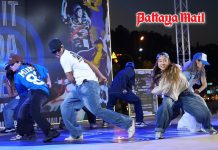 The item you are about to read is one of my favorite medical case histories. Bruises on a child’s body are often considered proof that a baby has been battered. A visible bruise on the buttocks, the shape of a hand and five fingers is almost ‘undeniable’ proof. Or is it?
The item you are about to read is one of my favorite medical case histories. Bruises on a child’s body are often considered proof that a baby has been battered. A visible bruise on the buttocks, the shape of a hand and five fingers is almost ‘undeniable’ proof. Or is it?
There was a very celebrated instance of a GP in the UK having discovered that so many of the Asian babies in the practice were showing signs of being ‘battered’ that the children’s welfare people were called in and an enormous number of children taken away. However, the highly observant GP was wrong!
In Thailand, and the rest of Asia, a new-born baby with the ‘handprint’ bruise is very common, while child abuse is not common at all. The problem, or rather the condition, relates back to Genghis Khan and the Mongol hordes. It is a wonderful piece of folklore and a fine example of applied genetics.
Let’s look at the folklore first, and you are going to have to dig very deep to get this tale anywhere else! A Mongolian baby, called Tanujin, was born just over 1,000 years ago, but did not breathe. His father, in desperation, held his new-born son upside down and smacked him severely over the bottom, so much so that the baby drew breath and lived, but carried the life giving bruise for the rest of his days. That baby later became Genghis Khan, (which means King of the Earth), and by the time he died in 1227 he was the ruler of a large chunk of it, including the area which later became known as Thailand.
History has chronicled that the Mongol hordes raped, pillaged and annexed countries from China to Persia. His highly mobile troops traveled the difficult terrain of Siberia. Famous cities were captured and looted such as Tashkent, Baghdad (still a good place to stay away from, thanks George) and Bokhara. Cities that surrendered were spared but those that resisted were razed and the people slaughtered. The Mongols conquered northern India and Afghanistan. In 1222, they defeated the Russian and Bulgarian armies. At the time of Genghis Khan’s death, his empire stretched from China’s Yellow River to the Dnieper, in Russia.
And now back to some interesting folklore. The descendants of Genghis Khan also showed the hand-shaped bruise on the buttocks, beginning with his four sons Ogdai, Jagatai, Juji and Tule, who were given one quarter of the empire each after their father died. They in turn passed on this ‘trademark’ and so this continues till today. If your “Luk Krung” children have the sign of Genghis Khan, called Mongolian Blue Spot, you can claim descent from the warrior king. However, there is quite a number of you, so I think there won’t be much left in Genghis’ estate by today.
Now Mongolian Blue Spot, as a clinical condition, is well documented, and I came across figures suggesting that at least one Mongolian spot is present on over 90 percent of Native Americans and people of African descent, over 80 percent of Asians, over 70 percent of Hispanics, and just under 10 percent of fair-skinned infants (Clinical Pediatric Dermatology, 1993).
Medically we describe Mongolian Blue Spot as flat bluish to bluish gray skin markings that commonly appear at birth (or shortly thereafter) and scientifically they are called Congenital dermal melanocytosis. They are flat, pigmented lesions with nebulous borders and irregular shape. They appear commonly at the base of the spine, on the buttocks and back, but also can appear as high as the shoulders and elsewhere. The medical text books also warn that occasionally Mongolian Blue Spots are mistaken for bruises and questions about child abuse arise. Obviously a text book that the UK GP did not read! Mongolian Blue Spots are birthmarks, not bruises.
So, for all of you with children with a peculiar blue birthmark on their bottoms, or for those interested in checking friends and neighbors (or the young ladies dancing in the chrome pole palaces), it seems fairly positive that the lineage is verified. You really have found descendants of the man who conquered more of the world than Alexander the Great. And guess what – my children have it too!





